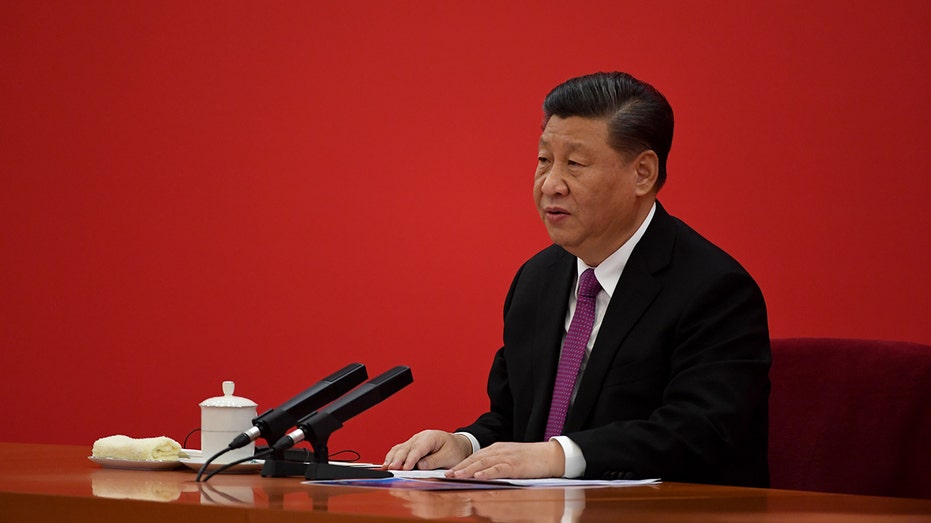President Donald Trump’s tariffs on China took effect on Tuesday ahead of a call with Chinese President Xi Jinping, while the tariff fight with Canada and Mexico is on hold for at least a month.
Trump on Saturday signed three executive orders to impose tariffs on China, Canada and Mexico, respectively, that were to take effect on Feb. 4.
Each of the orders cited presidential authority under emergency declarations to impose tariffs on those countries over what the president called their failure to block fentanyl shipments across the U.S. border. The orders also called for Canada and Mexico to curb illegal immigration into the U.S.
The president held calls with Canadian Prime Minister Justin Trudeau and Mexican President Claudia Sheinbaum on Monday and later announced that the implementation of the tariffs would be delayed for at least one month due to commitments made on border security.
VOTERS REJECT TRUMP’S TARIFF PUSH; MOST BELIEVE POLICY WILL HURT ECONOMY
Here’s a look at where things stand in Trump’s tariff dispute with China, Canada and Mexico.
China
The executive order Trump signed on Feb. 1 imposed a 10% tariff on products imported from China and also suggested that the president could increase or expand tariffs if the Chinese government retaliates. Those tariffs took effect on Feb. 4.
China responded with retaliatory tariffs of 15% on coal and liquefied natural gas and 10% on crude oil, agricultural equipment and large-engine cars imported from the U.S. that will take effect on Feb. 10.

HOW TRUMP’S TARIFFS CLOSED THE LOOPHOLE USED BY CHINESE RETAILERS
It will also impose export controls on certain rare earth minerals and metals used in advanced technology and clean energy products.
Additionally, the Chinese government launched an anti-monopoly investigation into Alphabet, the parent company of Google, and added biotechnology firm Illumina and PVH Corp., the holding company for brands including Calvin Klein, to its “unreliable entities list.”
| Ticker | Security | Last | Change | Change % |
|---|---|---|---|---|
| PVH | PVH CORP. | 83.32 | -6.28 | -7.01% |
| ILMN | ILLUMINA INC. | 123.24 | -7.86 | -6.00% |
| GOOGL | ALPHABET INC. | 201.23 | -2.79 | -1.37% |
Trump and Xi are expected to hold a call on Tuesday.
CHINA RESPONDS WITH TARIFFS ON US GOODS AFTER TRUMP’S TARIFFS ON CHINESE IMPORTS TAKE EFFECT
Canada
Trump’s Feb. 1 executive order imposed a 25% tariff on imported goods from Canada, as well as a lower 10% tariff on Canadian energy products, that would take effect on Feb. 4.
Canada retaliated by announcing it would impose retaliatory 25% tariffs on U.S. exports, including on beer, wine, bourbon, fruits and fruit juices, apparel, sports equipment and household appliances. Trudeau added Canada was considering non-tariff measures related to critical minerals, energy and other partnerships.
TRUMP TARIFFS PROMPT WARNINGS FROM TRADE GROUPS
Trump and Trudeau spoke on Monday and announced a one-month delay in tariffs. Trudeau signaled that Canada will deploy 10,000 personnel to help secure the country’s border with the U.S., as well as implement a previously announced $1.3 billion border plan.
After the two governments announced the agreement, Trump signed an executive order pausing the tariffs until March 4. The order noted that Trump can impose the paused tariffs “if the illegal migration and illicit drug crises worsen, and if the Government of Canada fails to take sufficient steps to alleviate these crises.”
Mexico
Trump’s executive order on Feb. 1 imposed a 25% tariff on products imported from Mexico. Mexico’s government vowed to retaliate with its own tariffs and non-tariff measures, though Sheinbaum didn’t reveal which products or activities would be targeted.
Trump and Sheinbaum spoke on Monday and reached an agreement to pause tariffs that would see Mexico deploy 10,000 members of its National Guard to the border to prevent drug trafficking and illegal immigration, while the Mexican president said the U.S. would work to prevent firearms smuggling into Mexico. The Mexican government has previously announced similar deployments to the border for security purposes.
Trump also signed an executive order pausing the tariffs until March 4, as he did in response to the Canada agreement, that contained an identical warning about the tariffs being imposed if there is insufficient progress on border security.
Read the full article here


